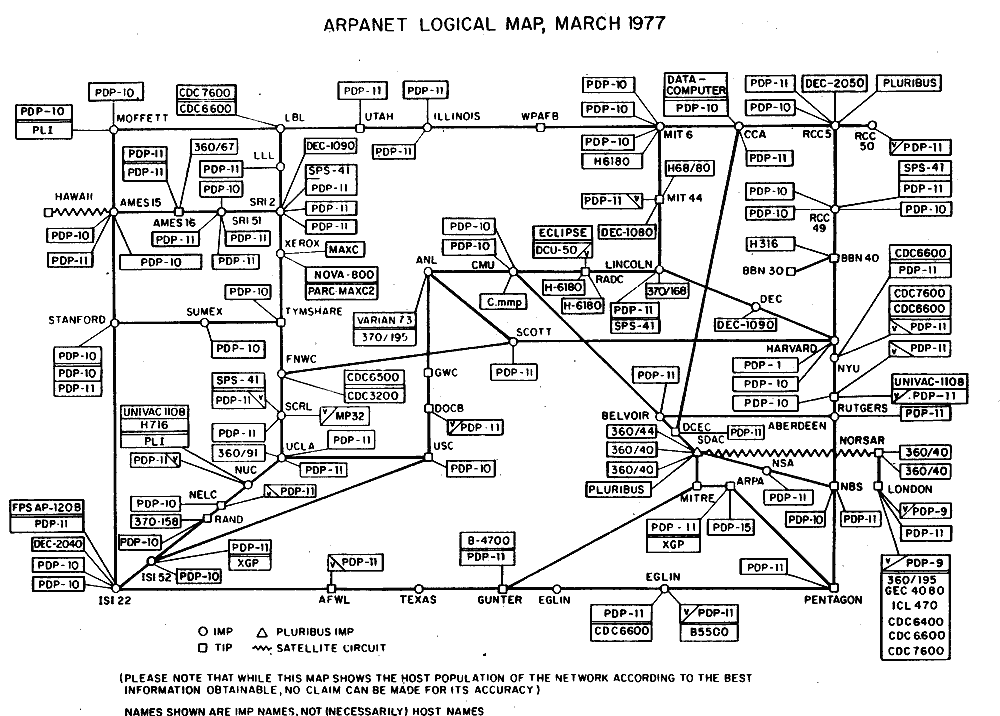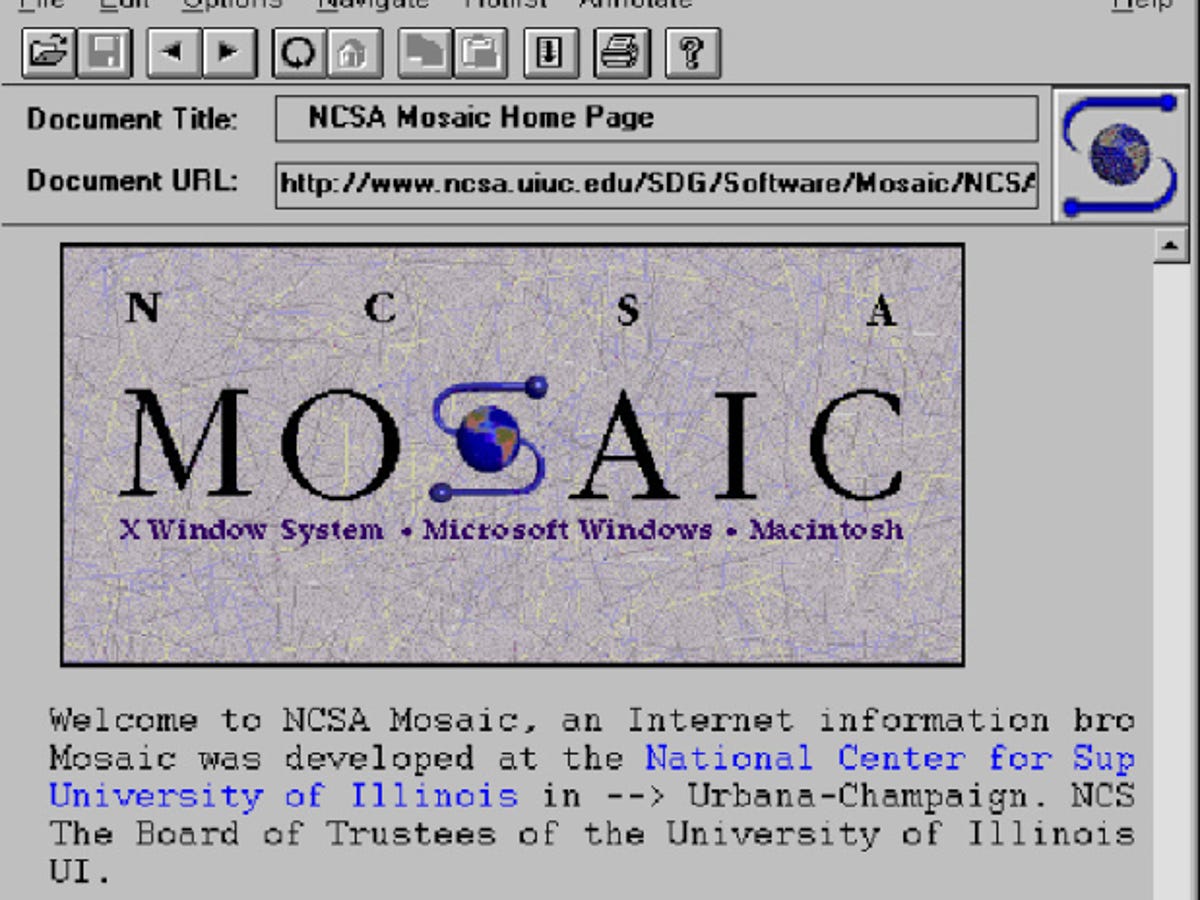





this was my final essay for my history class,, i think it'd be an interesting read so i put it online ^_^
The Internet is something that permeates every aspect of our lives. We use it to communicate, for research, to store information more efficiently, and so much more too. A lot of people today take it for granted, but it’s important to know the origins of it and its very rich history too. This matters for several reasons, but mainly because without the Internet, it would be much harder to access important information, and so many things wouldn't have been possible without that. So, it's vital to the modern world, as far as we know now. But how did it start? And how did it rise in popularity this quickly? And, most importantly, why does it even matter how?
Before the web, computers were made for processing and storing information. The U.S. government was central in developing the technology that would later become home computers, under an agency called The Defense Advanced Research Projects Agency (DARPA). This was formed by former president Dwight D. Eisenhower, and was for the purpose of creating technologies that would be used for the military. The UNIVAC 1 was one of the first widely-known computers, and after being accepted into the U.S. Census Bureau in 1951, it would famously predict the Eisenhower landslide in 1962. Later, the first actual network between computers in the United States was called the ARPANET, and used packet-switching methods to transport information back and forth. However, the very first connection/network between multiple computers was the NPL Network, which was located in the UK in the National Physical Laboratory. Both used similar methods, and were established at around the same time. Packet-switching is where the information being sent is split up into thousands of packets, and then reordered once it gets to its destination. It’s very secure, and surprisingly the Internet still relies on this method today. Established in 1969, the first four hosts on ARPANET were located in UCLA, Stanford Research Institute, UC Santa Barbara, and The University of Utah School of Computing. Later, it would become international via satellites in June of 1973. In 1974, the TCP/IP (Transmission-Control Protocol/Internet Protocol) was created by Bob Kahn and Vint Cerf under DARPA, who are the ones credited as the ‘creators of the internet’. This protocol is to help computers speak the same language, and would have its standards changed on January 1, 1983. This is considered the birth of the Internet.
In the past, computers have been very expensive, hard to transport, and not very small or convenient. However, with a rise in cheaper technology and smaller sized computers, more companies were able to produce home computers for the general public. We were introduced to the concept of home computers in the 1970s with ARPANET, but it wasn’t until the 80s that it was more popularized. The most popular computer brands were Apple, Commodore, and Tandy, all somewhat affordable for middle/upper class households. The best-selling computer of all time would be the Commodore 64, which sold over 17 million units between 1982 & 1994. By this time, computers were now semi-ubiquitous in American society, being integrated into homes, schools, businesses, and industry. Storing information was becoming more and more digital than analog, for the sake of convenience and organization, along with the fact that technology was just developing to where analog methods aren’t as efficient. This rise in faster technology is called the digital revolution, and is what allowed the internet to grow at the fast rate that it did. By 1984, 8.2% of U.S. households had a personal computer, 15.3% of households with children, and 22% for upper-class households. This sort of had to do with wealth being a barrier from access to technology, which is still an issue (though not as prevalent) as it was then. With the Internet being available to the public, the population online grew from 3,000-20,0000 during 1986-7.
Many people consider the terms ‘internet’ and ‘world wide web’ to mean the same thing, but they really aren’t. The Internet is a system of digital infrastructure that connects devices together, and the World Wide Web is a way to access information using the Internet. Before, it was only available to the government and universities, but became available to the public in 1991. Tim Berners-Lee came up with the idea for the Web, and both Marc Andreessen and Eric Bina created the first browser, called Mosaic. This browser was also the first browser to be able to display inline images, and was released in 1993. It would be the basis for later browsers like Internet Explorer and Netscape (also co-created by Marc Andreessen). By this time, the web was a core part of modern culture, and it was also the era of web 1.0. Web 1.0 was something unlike what we know of the web today, it was mainly just made up of static hand-coded HTML websites. By 1999, almost every country had an internet connection, and nearly half of Americans used it on a regular basis. However, the accessibility of technology required to be online still wasn’t the best, because it was a difficult and complicated process to set up. Dial-up is what most people used, as it was the only affordable configuration. There was a short-lived stock market boom/crash from 1995-2005, often referred to as the ‘Dotcom Bubble’. Businesses had invested tons of money into online store-fronts, however due to a lack of customers, they failed miserably. Reports say that “Between 1995 and its peak in March 2000, the Nasdaq Composite stock market index rose 800%, only to fall 740% from its peak by October 2002, giving up all its gains during the bubble.”This was a very short-lived crash, only lasting around 7 years between it’s rise and fall. By this time, people thought that the Internet was more about economic growth, and no longer for interpersonal communication. However, we would later see the rise in social networking sites as time progresses. In 2000, a survey was conducted in the U.S. and found that the majority of households in the U.S. had internet access and at least one home computer. Within the early 2000s, internet access became truly global, and wasn’t just limited to developed countries. The technology was getting more advanced, while simultaneously becoming cheaper and therefore more accessible.
The term ‘web 2.0’ was coined in 2004 by Dale Dougherty, and with rapidly-changing technology, people were finding new ways to use the web. Social networking sites were becoming more popular, with blogging sites such as Myspace taking center stage. Within these web-blogs, linking to other blogs and sources was popular, which created this community online, and facilitated a conversational aspect to their online presence that the 1990s never really had. Dougherty defined web 2.0 to be a more ‘read-write’ web, where users could interact with each other and have more available spaces for different interests they might have. It was when the majority of websites that we see today were developed, because there needed to be more resources out there that were online. There were developer tools now, with simple UI that made the adoption of this new era of the web easier. Google web toolkit, AJAX, and Flex are what were mainly used. “One of outstanding features of web 2.0 is to support collaboration and to help gather collective intelligence rather web 1.0” During this era, there was a lot more innovation in online spaces, while also being a start in more corporate presence there too. By 2007, the majority of Americans reported having broadband internet, and by 2012, the population of the internet reached over 2 billion. There was an increase in more efficient, smaller, and cheaper technology, however still not as steep as during the early 2000s. The web was becoming integrated with most people’s lives, and has been since it was first introduced to the public.
Some people say that Web 3.0 hasn’t happened yet, and others say it’s been around since its start in 2010. In general, most would say that it’s starting to happen, however a lot of the aspects of this stage are still being developed. Machine learning and Artificial intelligence is starting to make its way into the mainstream, and to make it easier to use across the board. By this, there is now a lot of work being done by the W3C to standardize the languages, system, publications, and tools that have already been made, so that they’re easier to use by the general public. Another big facet of Web 3.0 is a globalization of the web. By making things more standardized in different ways, there’s also a need for there to be more accessibility for people in different parts of the world. Along with there being a big push in friendliness for users, there is also a need for there to be more friendliness for the machines, too. The ways that pages are linked together have changed, to now be more machine-oriented. Linking styles were changing, with there being less freedom from the user themself. Instead, it was set up to where the machine is the one making the decisions, rather than hand-typed hyperlinks. In short, there was less personal innovation, and more corporate control over the spaces that most people use. Tim Berners-Lee referred to this era as well as the ideal web as a ‘semantic web’, and he had defined that as being "a web of data” with the main focus being how machines read and process information. The main infrastructure of the World Wide Web is changing as we know it, and it’s not gonna stop anytime soon.
So, why does it even matter how the internet formed? Well, it shows its original uses, how it was created using human innovation and working together, and it also helps to understand why its culture is how it is today. Knowing that it was started by just a few people, and the need for human connection in an easier way is vital to understanding how to utilize it today. With corporations taking over a lot of online spaces, trying to stay rooted in the homemade aspect of the web is important to keep that culture alive. Because if not for people creating a community within the web, then why is it even there?
1. A Brief History of the Internet - University system of Georgia
2. Dot-com Bubble-Wikipedia
3. Evolution of the World Wide Web: from Web 1.0 to Web 4.0 - University of Alaska System
4. UNIVAC 1 - Wikipedia
5. A Brief History of the Internet - Science and Media Museum
6. ARPANET - Wikipedia
7. NPL Network - Wikipedia
8. Digital Revolution - Wikipedia
9. GeoCities - Wikipedia




